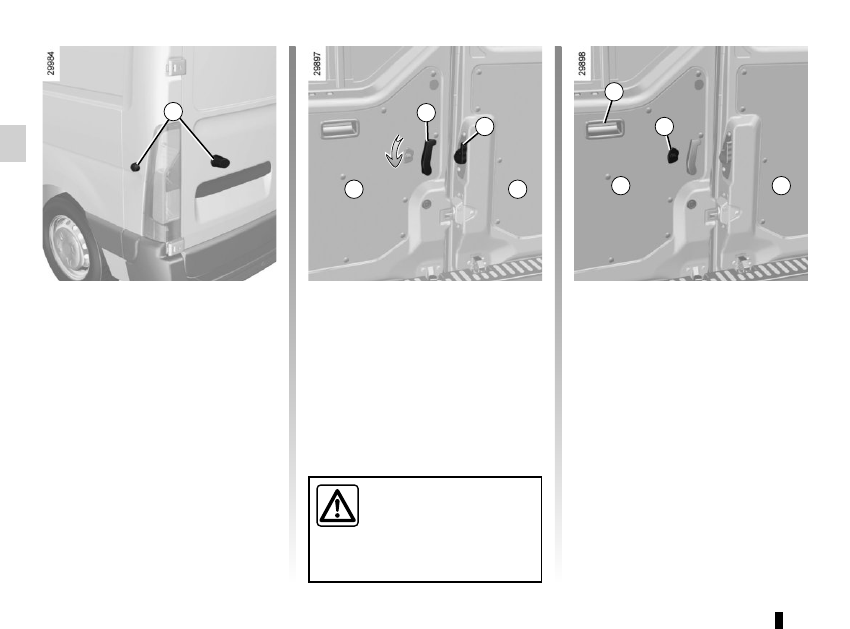Renault Master (2018 year). Instruction - part 2

1.18
REAR DOORS
(2/2)
Opening the doors to 270°
Remove the check-strap from its hous-
ing as when opening to 180°. Open
the door fully until the magnets 6 make
contact.
Closing from the outside
Partially close the left-hand door, then
slam it shut.
Then repeat this with the right-hand
door.
Lock.
Opening from the inside
Lower lever 7 and push door A.
Pull lever 8 and open door B.
Closing from the inside
Partially close door B, then slam it shut.
Do the same with door A using
handle 9.
Locking/unlocking
Turn button 10.
9
7
8
10
6
For your safety, check that
all the vehicle’s doors are
properly closed before
starting the engine.
A
B
A
B